Federal Reserve District Series 1976 Bicentennial $2 Bill Collection

Free Shipping on this Item
The first $2 notes (called United States Notes or "Legal Tenders") were issued by the Federal Government in 1862 and featured a portrait of the first Secretary of the Treasury, Alexander Hamilton (1789-1795).
The first use of Thomas Jefferson's portrait on $2 notes was on Series 1869 United States Notes. The same portrait has been used for all series of $2 United States Notes as well as for all $2 Federal Reserve Notes.
Monticello, Thomas Jefferson's estate in Virginia, was first featured as the vignette on the back of the Series 1928 $2 United States Note.
In celebration of the United States' bicentennial, a $2 Federal Reserve Note, Series 1976, was introduced. The new design maintained the portrait of Jefferson on the face but the back was changed from Monticello to a vignette of the signing of the Declaration of Independence. The most recent printing of the $2 note has the Series 2003 date. There are no plans to redesign the $2 note.
The vignette on the back of the current $2 Federal Reserve Note features an engraving of John Trumbull's painting "The Signing of the Declaration of Independence." The original Trumbull painting portrayed 47 people, 42 of whom were signers of the Declaration (there were 56 total). However, because of a limited amount of space on the note, 5 of 47 men in the painting were not included in the engraving.
The Bureau of Engraving and Printing prints billions of dollars - referred to as Federal Reserve notes - each year for delivery to the Federal Reserve System. The Federal Reserve operates as the nation's central bank and serves to ensure that adequate amounts of currency and coin are in circulation. Federal Reserve Notes are the only type of U.S. banknote currently produced. Federal Reserve Banks were established by Congress as the operating arms of the nation's central banking system. Federal Reserve Notes are put into circulation by the Federal Reserve Banks, at which point they become liabilities of the Federal Reserve Banks and obligations of the United States.
There are 12 Federal Reserve Districts:
A-Boston, B-New York, C-Philadelphia, D-Cleveland, E-Richmond, F-Atlanta, G-Chicago, H-St. Louis, I-Minneapolis, J-Kansas City, K-Dallas and L-San Francisco. In the 12th District, the Seattle Branch serves Alaska, and the San Francisco Bank serves Hawaii.
The System serves commonwealths and territories as follows: the New York Bank serves the Commonwealth of Puerto Rico and the U.S. Virgin Islands; the San Francisco Bank serves American Samoa, Guam, and the Commonwealth of the Northern Mariana Islands.
Since bank notes are distributed regionally, it is almost impossible to acquire a complete set of all 12 Districts. This unique collection includes Series 1976 $2 Bills from all 12 Districts and each is in Crisp Uncirculated condition.
| Free Shipping on this Item | No |
|---|---|
| Odd Denominations | N/A |






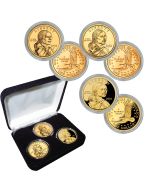
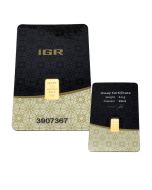

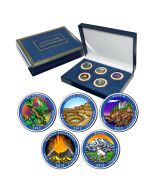
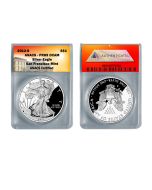
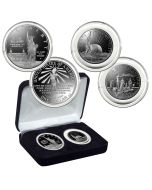
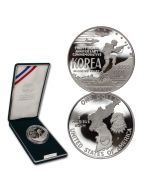
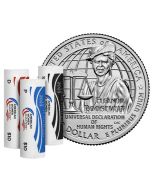
Sign In
Create New Account